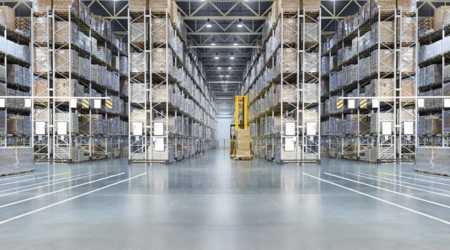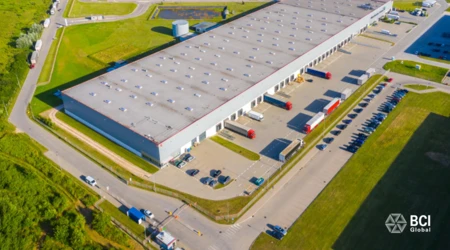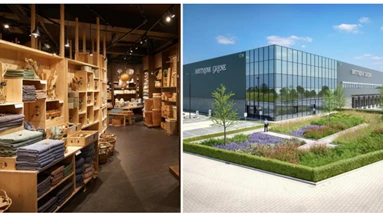Location selection for distribution center
One of your key strategic decisions is selecting the right location for your new distribution operations. You are making new investments in land, buildings, equipment and talent for the long term. As the global business environment in which you need to make a location decision for your distribution center is becoming more uncertain every day, it is crucial to make a robust and future proof selection of a new distribution center location.
Our team of experts has extensive experience in this field, with a deep understanding of global markets and local situations. We provide you with comprehensive location analyses and data and experience driven recommendations to help you identify the best locations for your business. We do this around the globe, including EMEA, North America and LATAM, China and Asia-Pacific.
In the current global environment, uncertainty is a given. Geopolitical turmoil, technological developments, labor market challenges, freight cost volatility, tax climate changes to name a few, are having a huge impact on cost effectiveness, quality of the business environment and the risk profile of your current distribution center locations. We support you with a thorough fact-based location strategy and site selection analytics, no matter whether your project has a global scope or is focused on EMEA, North America, LATAM, China or Asia-Pacific.
We can support in two phases of your location selection process:
1 Scenario analysis
In this strategic phase we support you with defining and analyzing meaningful location scenarios in order to answer questions such as: can we expand at our current locations or should we set up a new location? How many new locations do we need? In what geographical area should we start selecting a new location and site?
In the scenario definition and analyses we take amongst others the following factors into account:
- Your company’s overall business strategy
- Future business projections
- External factors (e.g. economy, geopolitical, legal and regulatory, climate, technology, freight markets, labor markets)
Based on a well-based quantitative and qualitative comparison of the different location scenarios the preferred scenario is selected and the next steps for your company are defined. These next steps may include a detailed location & site selection process.
2 Location & Site Selection
In order to select the optimal location for your company’s new distribution center we execute a step-wise filtering process.
The filtering from longlist to shortlist and final optimal location is very much fact-based and focuses on comparing locations from a Cost, Quality of the Business Environment and Risk perspective.
Once the shortlist of candidate locations is defined we start the fieldwork activities: conducting fieldwork visits to the top logistics locations in order to validate and enrich all desk research findings with actual insights from the field.
In addition to our location strategy and site selection projects we also help companies in:
- detailed labor market analyses, applying our proven IDEAL methodology (In-Depth Assessment of Labor Markets) to answer your questions regarding the feasibility of recruiting and retaining your staff in current and / or new distribution center locations
- detailed location risk assessments, using our in-house developed IRAM risk framework (Integral Risk Assessment Method), to assess the risk level of your company’s current (and potential future) locations on 46 different location risk elements



Our approach is a step-wise filtering process. After having detailed the specific profile of your new warehouse investment project and the key location drivers, a first assessment of a longlist of locations takes place based on a set of critical location factors. Based on this assessment a shorter list of promising locations is selected which are analyzed using a detailed listing of cost, quality of the business environment and risk factors. Following from that last desk research step the most promising locations are selected for fieldwork visits. During the fieldwork detailed discussions are held with local authorities, economic development agencies, recruitment experts, real estate companies, peer companies, and so on in order to come to the selection of the optimal location for your new warehouse.

You probably have already some locations in mind at the start of your location selection process. But be prepared to be surprised, as we take not just the sites you come up with into consideration, but also potential locations that have a good score based on the criteria agreed upon. And that is the first step: in consultation with you we select the right criteria and weight of those criteria for your site selection for your distribution center.
In the matrix the costs of all candidate locations are presented on the vertical axis with the lowest cost on top and the highest on the bottom. The horizontal axis shows the weighted average quality scores per location and by color coding the risk profile of each location is indicated.
Example of what a site selection outcome looks like:

Based on a matrix like this your company’s top management can make a well-balanced decision on what is the perfect location for your specific company and your specific planned investment into a new distribution center: should we go for the best Cost/Quality balance? How important are the location costs in our decision? Do we see any critical risk elements that drive us towards or away from certain locations?
The site selection criteria and their weight may vary, depending on your business strategy, type of distribution center (e.g. e-commerce, spare parts, medical, bulk). Location factors or relative weightings may also differ per geographical region. For example investment incentives and grants for certain projects are more of a driver in North America than in Europe and natural disaster risks are typically weighted as more important in Asia-Pacific than in Europe.
Site selection factors
In location and site selection for new distribution centers many factors may play a role, so your location and site selection advise is based on three types of factors:
- Costs - All relevant factors that can be translated into money such as land, real estate, labor, logistics costs, taxes, etc. minus the investment incentives, grants, tax credits and tax exemptions offered in the different locations
- Quality of the business environment - Factors that cannot be translated directly into currencies, but have still a direct effect on the performance of the new operations. Think of availability of labor, accessibility, supplier availability, customs regulations, ease of doing business and cultural fit
- Risk - All external business disruption risk factors that you cannot influence, but that still may have a substantial impact on your future operations such as inflation risk, currency exchange rate risk, transparency risk, natural disaster risk, etc.
The realization of a new location comes with significant investments and internal changes. The investments are done for a long period of time and therefore the impact of the new location should also contribute positively for a longer period of time. In other words: in case of a wrong location decision the negative implications will also have a negative impact for a long period (e.g. higher costs, issues in finding the right labor, regulatory issues).
Investment incentives and tax reduction measures are attractive in certain countries/States/regions in Europe, the US, Mexico/Latin America, China, Asia. Especially for new warehouse facilities with a large number of workers the total financial packages can be (very) interesting for you.
Geographical granularity
In our approach we typically start at the level of regions within countries rather than comparing countries at a national level. This is because for many important location factors the differences between regions in the same country can be significant. This is for example the case for factors like labor costs, labor availability, real estate availability, natural disaster risks and many others.
Illustration of in-country differences based on recent BCI projects:

Site selection criteria for your distribution center
You might have a variety of reasons for starting the site selection process for your new distribution center: cost reduction, expansion of warehouse and distribution capacity to facilitate business growth, the entry of new markets, tapping into new labor pools, rationalization after a merger or acquisition, coping with geopolitical developments, etc.
In the location selection for a new distribution center a key driver is the talent factor for the new operation: is it a highly automated warehouse where only a limited number of high skilled operators will be working or is it a labor-intensive operation with hundreds of lower skilled workers? These varying profiles have a large impact on the importance of factors such as labor costs, labor availability, labor market competition, flexibility of working hours, etc. The realization of a new distribution center comes with significant investments (or leases). In addition, next to proximity of key markets, transportation costs, logistics infrastructure and customs can be of key importance in selecting the right location for your new distribution center!
Detailed labor market analysis
We conduct detailed labor market analyses, helping you to determine to what extent you can still recruit and retain the right amount and quality of talent in your current and / or potential new locations. In this approach we apply quantitative labor market analysis on supply of and demand for talent, conducting 5 to 10 year forecasts, and enrich that with in-depth qualitative analysis by gathering information from experts in the local labor market, assessing experiences of other companies in the same labor pool, assessing primary and secondary employment packages and so on.



05 December 2024

07 June 2023

16 February 2022

01 September 2021

20 January 2021








